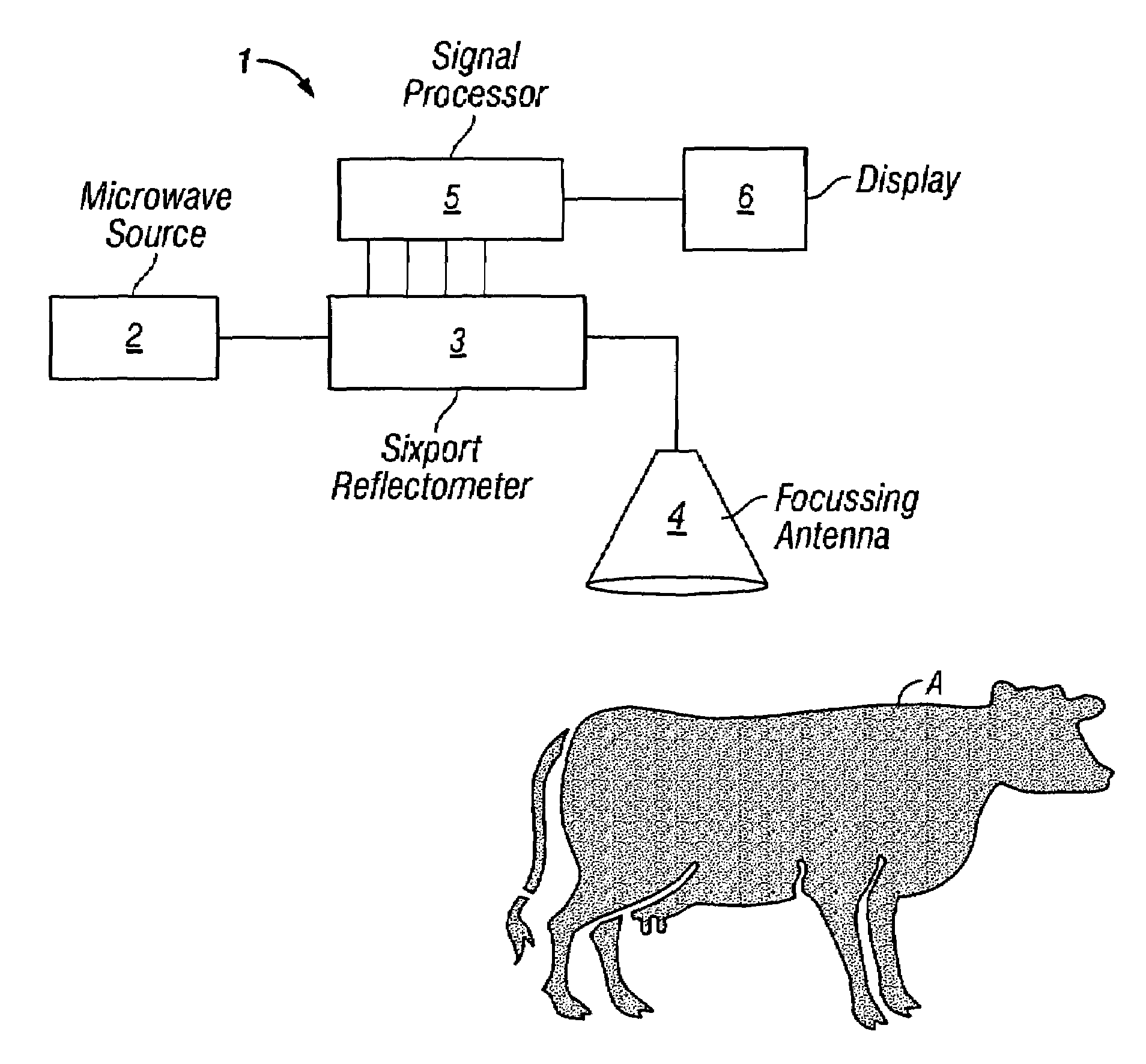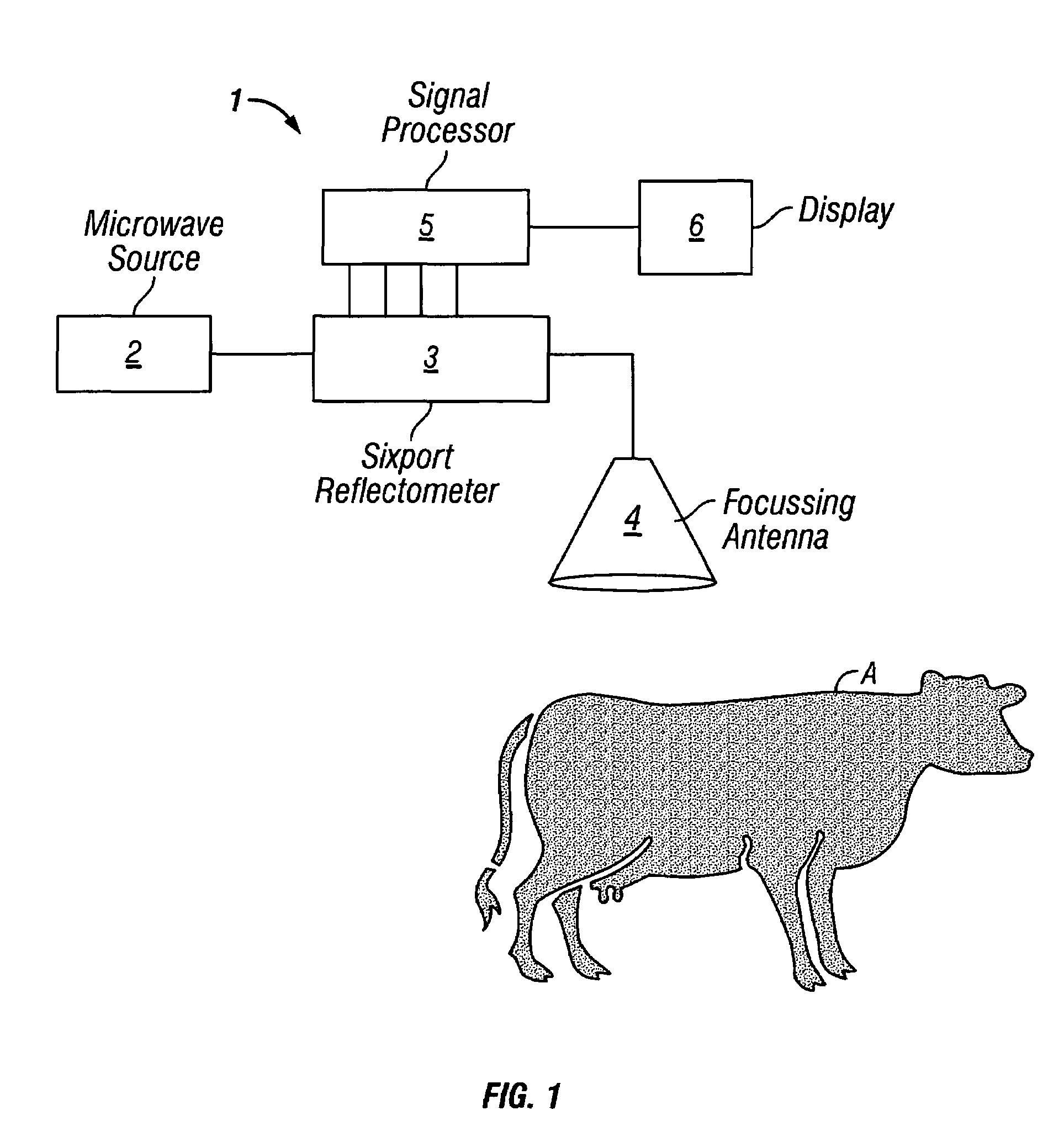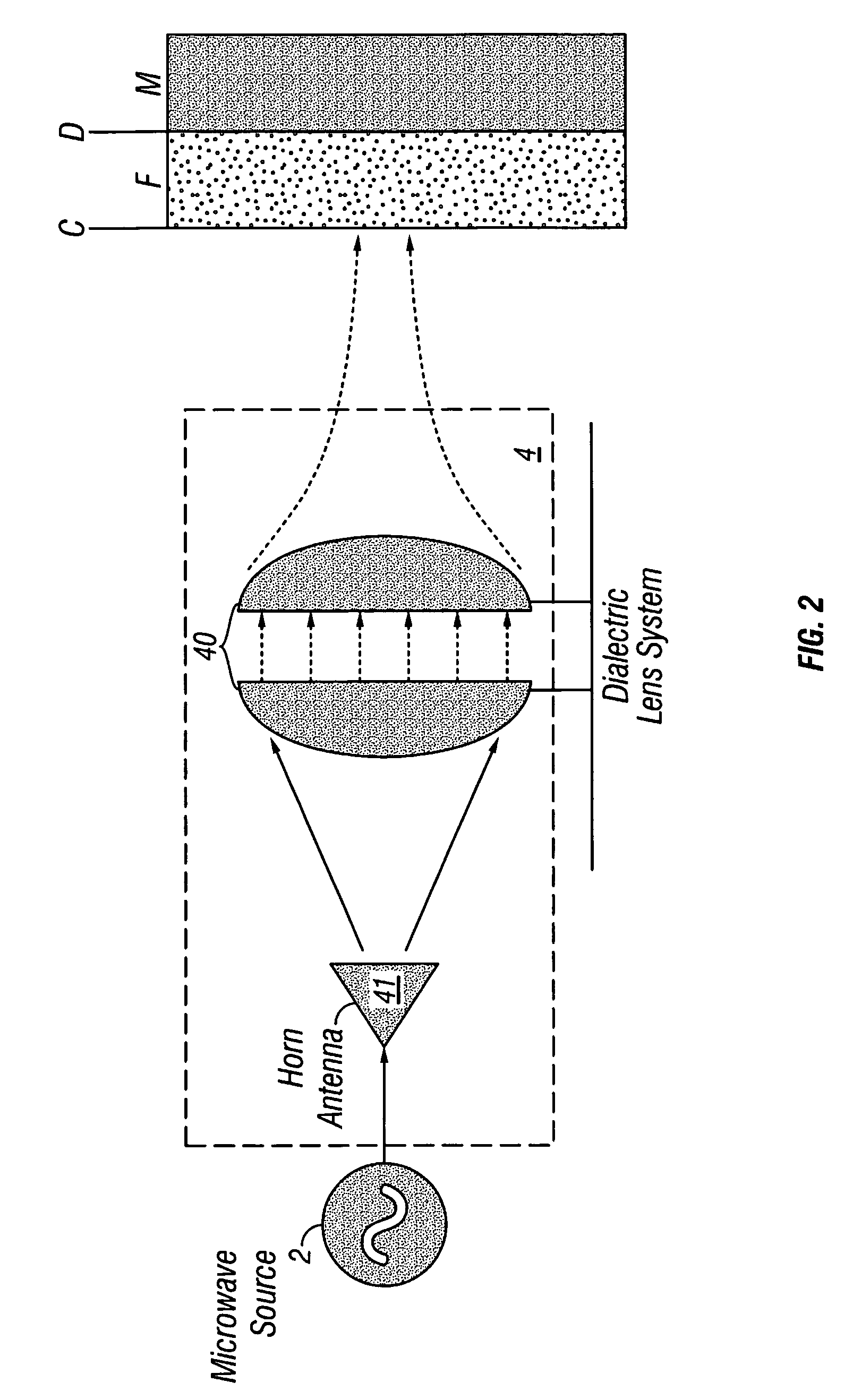Fat depth sensor
a depth sensor and fat technology, applied in the field of methods and methods, can solve the problems of reducing the swept frequency range without sacrificing, requiring more complex and costly equipment capable of generating a wide range of frequencies, and many spurious reflections
- Summary
- Abstract
- Description
- Claims
- Application Information
AI Technical Summary
Benefits of technology
Problems solved by technology
Method used
Image
Examples
Embodiment Construction
[0045]Referring first to FIG. 1, a block diagram of a sensor 1, according to one aspect of the invention is shown. An animal carcass A, represented in FIG. 1 by a cow, which is to be measured to ascertain the depth of the fat layer F (see FIG. 2) is positioned near the sensor 1.
[0046]The sensor includes a microwave source 2 to generate microwave signals and communicate them to a sixport reflectometer 3 through a waveguide. The sixport reflectometer 3 communicates the microwave signals to a focussing antenna 4, which focuses the microwave signals onto a portion of the animal tissue.
[0047]Traditionally, the microwave source 2 would be used to generate a relatively wideband signal and the reflected energy would be analysed using Fourier Transform techniques. However, to reduce the effects of spurious reflections, provide a high resolution measurement and minimise the computational burden and associated cost and complexity, the present invention uses three discrete narrow-band signals. ...
PUM
| Property | Measurement | Unit |
|---|---|---|
| frequency | aaaaa | aaaaa |
| power | aaaaa | aaaaa |
| size | aaaaa | aaaaa |
Abstract
Description
Claims
Application Information
 Login to View More
Login to View More - R&D
- Intellectual Property
- Life Sciences
- Materials
- Tech Scout
- Unparalleled Data Quality
- Higher Quality Content
- 60% Fewer Hallucinations
Browse by: Latest US Patents, China's latest patents, Technical Efficacy Thesaurus, Application Domain, Technology Topic, Popular Technical Reports.
© 2025 PatSnap. All rights reserved.Legal|Privacy policy|Modern Slavery Act Transparency Statement|Sitemap|About US| Contact US: help@patsnap.com



